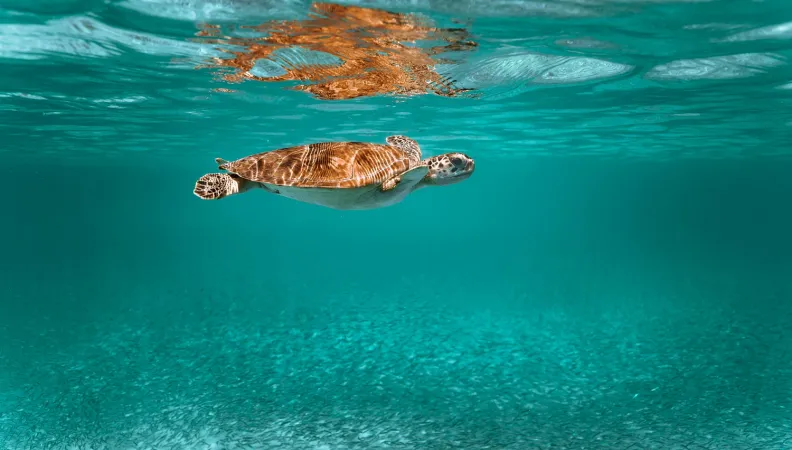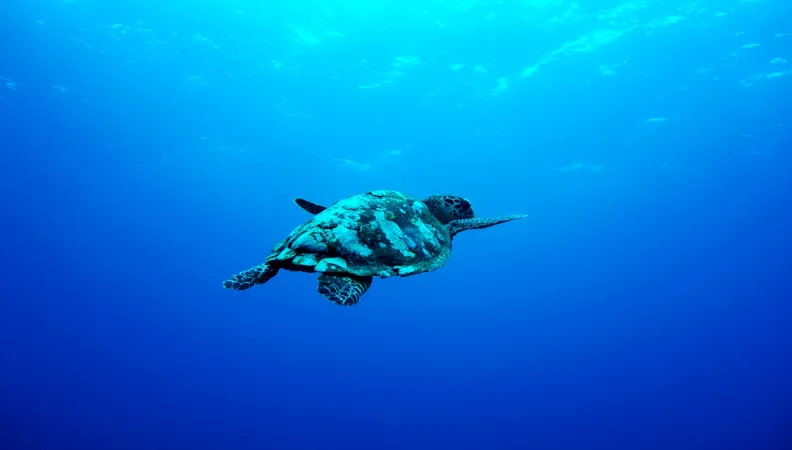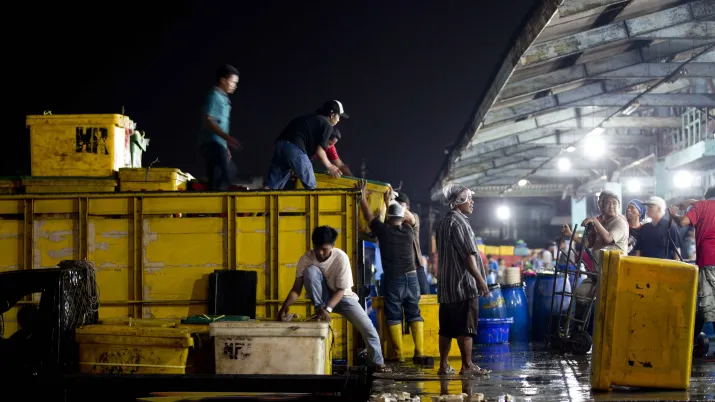 Often referred to in the singular, the ocean is nonetheless a plural space, built according to the diversity of society’s relationship to the sea. Through the study of an oceanographic phenomenon in the Eastern Tropical Pacific – the Costa Rica Thermal Dome – this thesis focuses on the extension of biodiversity conservation challenges to the high seas and the socio-political dynamics that this generates.
Often referred to in the singular, the ocean is nonetheless a plural space, built according to the diversity of society’s relationship to the sea. Through the study of an oceanographic phenomenon in the Eastern Tropical Pacific – the Costa Rica Thermal Dome – this thesis focuses on the extension of biodiversity conservation challenges to the high seas and the socio-political dynamics that this generates.
Context
Even though it covers 43% of the Earth's surface, the high seas – designated by jurists as being beyond national jurisdiction – tends to be defined only implicitly. Yet it is the site of various human activities (navigation, fishing, mineral exploration, etc.) and, in the current context of climate change and anthropogenic pressures on ecosystems, its ecological state is the subject of growing concern.
For more than 15 years, these issues have been discussed at the United Nations in informal exchanges. This led to an intergovernmental conference opened in September 2018 on the conservation and management of biodiversity in areas beyond national jurisdiction. In connection with this diplomatic process, various sites on the high seas are made visible by the advocacy of non-governmental organizations (NGOs) calling for their protection. These include a phenomenon located in the Eastern Tropical Pacific: the Costa Rica Thermal Dome.
Goal
This thesis aims to study the socio-political emergence of the Costa Rica Thermal Dome. This oceanic upwelling phenomenon is a rise of cold waters rich in nutrients, produced by the main winds and marine currents of the region, which moves seasonally between the waters under the jurisdiction of several Central American States and international waters. Discovered in the late 1940s by American oceanographers, the different issues related to the conservation of its biodiversity have emerged over the past decade, mainly under the action of the regional NGO MarViva.
As this matter involves a wide range of actors (NGOs, offshore fisheries, scientists, States, intergovernmental organizations, etc.), this research looks into the interactions and problems of collective action associated with the Thermal Dome, in order to question the conditions of emergence of a “common” of such complexity: how is the dome “built”? By which actors, through which discourses and using which knowledge? What collaborations and polarizations does it crystallize?
Method
This thesis is based on a multi-location qualitative survey, centered around the gathering of a corpus of written documents (multidisciplinary scientific literature, grey literature, legal texts), semi-directional interviews and ethnographic moments.
The survey is conducted between France, Costa Rica and Nicaragua. A Central American trip was organized in 2021 to collect most of the data through interviews with stakeholders located between different coastal sites (Puntarenas, Cuajiniquil, Playas del Coco, San Juan del Sur) and the capital of Costa Rica, San José.
Results
The main result is the production of a PhD thesis in human geography: A limit to the ocean Frontier? The offshore construction of the Costa Rica Dome (defended on July 2nd, 2024)
A research paper has also been published: Questioning fishing access agreements towards social and ecological health in the Global South (Editions Agence française de développement, 2021)
Lessons learned
This research explores this phenomenon’s social construction in the three main fields that have approached it: oceanographic sciences, fisheries, and biodiversity conservation.
Since its inception as a social object, the Dome has remained an offshore space, hardly accessible, manageable or governable to actors who have deployed various strategies to know and utilize it. Oceanographic research has increasingly mobilized remote technical mediation to decipher a geophysical space with fuzzy contours. Various fisheries, especially industrial and from distant-water fishing nations, recurrently came close to the Dome’s occurrence. These encounters nevertheless did not prove strategic on a stable basis and fishers still relate to it as a fluid space whose dynamic configurations serve them in labile ways.
More recently, the Dome has also become a subject for the global marine conservation sector. Under the leadership of Environmental Non-Governmental Organizations, it is being constructed as a geography of promise to advocate governance solutions for the protection of biodiversity in the High Seas. Yet, as an offshore feature, the Dome appears at the limit of the human world. Beyond appropriation, it invites us to consider a narrative other than the "ocean Frontier" – which has been a particularly strong narrative over the past years, building on views of oceans’ openness and emptiness as opportunity for human expansion and control.
Contacts:
- Nadège Legroux, PhD in Human Geography, UMR SENS
- Stéphanie Leyronas, research officer, AFD
 Legal notice EU (project) How do inequalities influence biological and social outcomes in MPAs in Indonesia? The Extension of the EU-AFD Research Facility on Inequalities program sought to answer this question in collaboration with SMERU to integrate inequality assessments and indicators into existing MPA policies in the country at all levels of governance.
Legal notice EU (project) How do inequalities influence biological and social outcomes in MPAs in Indonesia? The Extension of the EU-AFD Research Facility on Inequalities program sought to answer this question in collaboration with SMERU to integrate inequality assessments and indicators into existing MPA policies in the country at all levels of governance.
Context
MPAs are often associated with high poverty, being by design targeted at relatively untouched areas with low economic potential. Establishing an MPA can thus create a financial and social burden on resource-dependent communities, even if the benefits of doing so would bring higher yields or revenue in the future. Some stakeholders may benefit greatly from commercial activities (e.g., tourism, sale of higher-value products), while at the same time others are left out of the management processes, sometimes even those having most at stake.
Because MPAs will most likely affect user groups disproportionately, inequality issues among stakeholders can easily arise. Some aspects of MPA design, implementation, and management may contribute to positive ecological and well-being outcomes, while others will require tradeoffs. This coexistence of both co-benefits and trade-offs among stakeholder groups leads to tricky questions of equity, justice, and power in the design, implementation, and management of MPAs. There is a general lack of knowledge regarding how inequalities influence MPA outcomes.
In brief, MPAs are a driver of inequalities in communities that rely heavily on marine resources, and a powerful tool to help reduce them. While being an important aspect of the well-being of the people involved and of the success of MPAs, inequality assessments and metrics are currently largely absent in the design, implementation and management of MPAs. This research project aimed at a deeper understanding of the inequality dynamics in MPAs in Indonesia, drawing upon existing data and specific case studies. It helped us gain better knowledge of how inequalities influence biological and social outcomes in MPAs, and brought insights on how to integrate inequality assessments and indicators in existing MPA policies in the country, at every level of governance.
This project is part of the Extension of the EU-AFD Research Facility on Inequalities. Coordinated by AFD and financed by the European Commission, the Extension of the Facility contributes to the development of public policies aimed at reducing inequalities in four countries: South Africa, Mexico, Colombia and Indonesia over the period 2021-2025.
Objectives & results
This project first went through a scoping phase which enabled to better understand the role of MPAs and its link to inequalities. It then aimed to develop a framework for analyzing inequalities and their dynamics in MPAs in Indonesia, and a toolbox for mainstreaming inequalities in the design, implementation and management of MPAs. It has also fed into the policy dialogue conducted by the EU and AFD on marine resource management and environmental protection.
This project therefore resulted in:
- A working paper summarizing the current knowledge on marine protected areas and inequalities in Indonesia (carried out by LPEM).
- An in-depth research project on the links between inequality reductions and the management of marine protected areas, including cases studies of three MPAs (performed by the SMERU Institute).
- Training and capacity building activities with practitioners and MPA managers on the inclusion of inequalities in MPA management practices.
Research findings
You will find below the different publications related to this project :
- The benefits of Marine Protected Areas in fighting inequality and fostering environmental sustainability in Indonesia
- Balancing conservation and community welfare: Enhancing the management of Marine Protected Areas in Indonesia
- Can social inclusion benefit ecosystems?
Watch the replay of the "Research Conversations" webinar on this topic (July 2023):
Other research projects supported by the Extension in Indonesia




